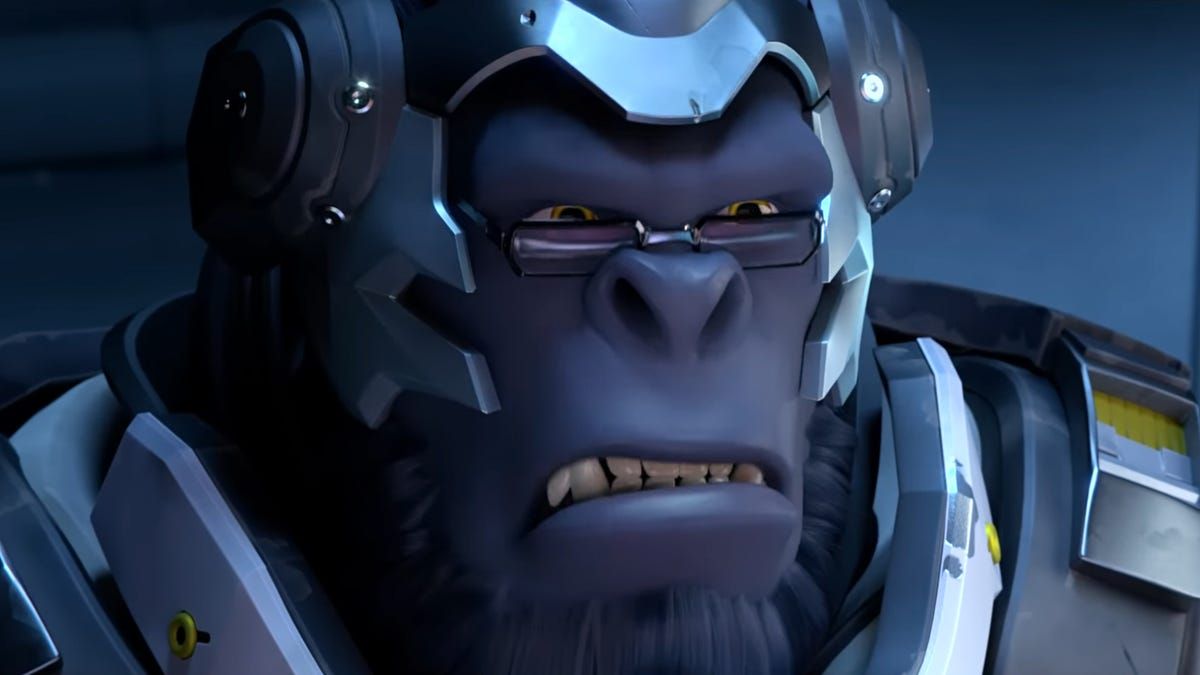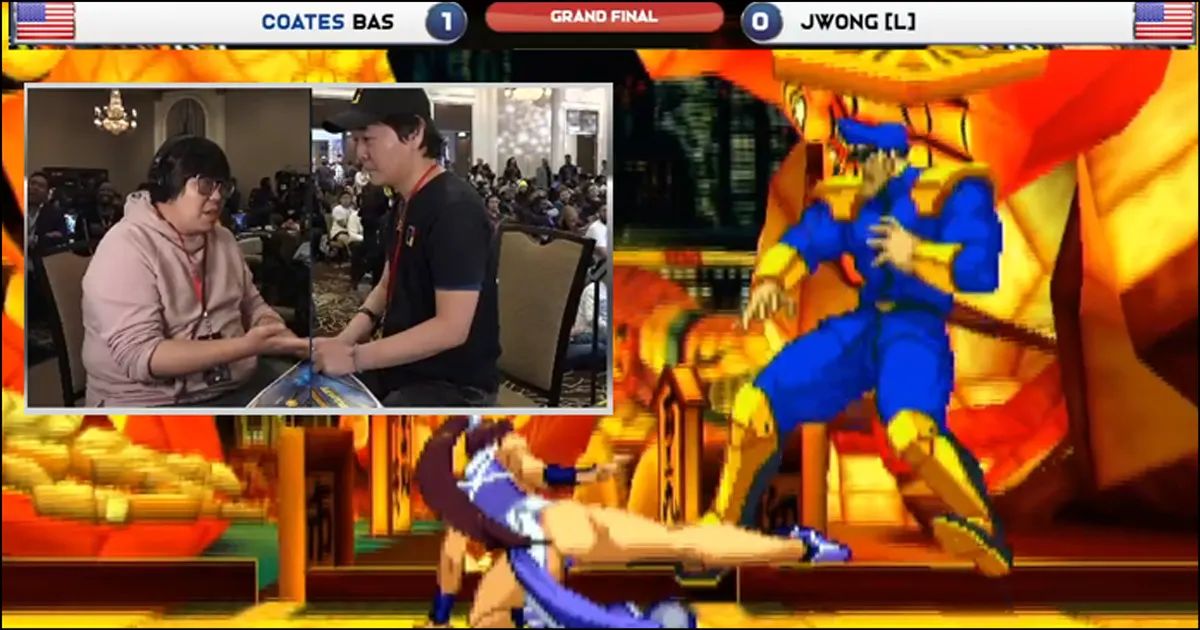Overwatch 2's PvP Isn’t Good Enough To Justify Gutting PvE
Overwatch players, it’s been a rough few years. When the hero shooter first debuted in 2016, it offered one of the best multiplayer experiences of all time: tight, focused combat centered on team compositions, an impressive hero pool with options for every kind of player, solid matchmaking, and a ranking system that felt fair.
Three years after its launch, however, Overwatch’s steady content stream shifted to a drip, then an outright drought, and we were eventually told this was all part of a bigger, grander plan that would encompass everything that made us fall in love with Overwatch and then some. On top of more PvP content, we’d get a dedicated, lore-rich PvE mode and more cooperative experiences, powered by a progression system that would let you level up your beloved heroes.
Advertisement
Read More: Overwatch 2's Ambitious Story Mode Is Getting Gutted Into Something Smaller
But when Overwatch 2 launched in October 2022, what was initially promised differed greatly from the final product. There was no PvE, but Blizzard promised it was coming, it had just been pushed aside to focus on the multiplayer aspect. During a May 16 developer stream, however, Overwatch game director Aaron Keller told fans that the PvE mode first announced in 2019 would never come, and that the focus has instead shifted almost entirely to the multiplayer experience. But that multiplayer experience is a bastardized version of the original, and it’s not enough for the Overwatch 2 team to hang its future on.
The Overwatch 2 promise
“First and foremost you have to remember that Overwatch is a team versus team 6v6 competitive experience, and there is no way we’re losing that at all,” then-game director Jeff Kaplan said during the Overwatch presentation at BlizzCon 2019. He had just revealed Overwatch 2, promising a new competitive mode (Push), more heroes, the aforementioned dedicated PvE mode that would let you fully customize each hero’s ability through an extensive skill tree, and “a shared multiplayer environment where no one gets left behind.” That meant that if you weren’t fussed about the PvE promises, you could not buy Overwatch 2, stick with Overwatch 1, and still get all the maps, modes, and cosmetics coming with the sequel. It seemed like a pretty sweet deal.
Advertisement
Read More: Competitive Overwatch 2 Is A Nightmare That I Can’t Stop Playing
After that huge announcement, players were content to stick with what felt, at times, like a dead game, logging onto Overwatch 1 to play the same maps, with the same heroes, and often the same players, for well over a year. After all, the core conceit remained ironclad, the multiplayer experience still untouchable, the promise of more faintly visible on the horizon. Then, in 2021, Kaplan left Blizzard and gave the reins to Keller, and in hindsight it seems like this was the point where things drastically took a turn for the mediocre.
Advertisement
A month after Kaplan’s departure, Blizzard announced that Overwatch 2 would drop the series’ beloved 6v6 model for a 5v5 one. “Overwatch has changed over time. We’ve gone from having no hero limits...to having a hero limit. We ended up introducing a role lock over the course of the game. We feel like this is the next step in the way Overwatch ought to be played,” Keller said during a livestream announcement. Some players felt eliminating the second tank would help with long queue times, while others, like myself, felt it was too aggressive a shift, one that threatened to upend the original game’s delicate (and mostly perfect) balance.
“First and foremost you have to remember that Overwatch is a team versus team 6v6 competitive experience, and there is no way we’re losing that at all.” former game director Jeff Kaplan in 2019
Advertisement
Then, not long before Overwatch 2 was set to launch, Blizzard announced that the sequel would replace the original game entirely, that it would launch without the PvE mode (which would come in 2023), and that it would follow a live-service, free-to-play model like so many other popular games (Fortnite, Apex Legends, Call of Duty: Warzone). So much for the “shared multiplayer environment,” or the chance to dip back into 6v6 whenever 5v5 kicked your ass too hard. In the days before Overwatch 2 launched, the bad news just kept piling up, but there was always the big, bold PvE to look forward to, right? Wrong.
Advertisement
Overwatch 2 multiplayer isn’t great
As a support main, the controversial swap to 5v5 was a problem from the jump. When reviewing the game back when I was an editor at GamesRadar, I questioned who the new format was for while pointing out that the blisteringly fast pace resulting from the lack of a second tank is a disaster for backline healers. Despite all of this, I did and still do play Overwatch 2 competitively nearly every day, hoping that my tank is supportive enough to make sure I’m protected from pesky DPS characters like Tracer and Sombra.
Advertisement
But the multiplayer experience is not good enough anymore for it to function as the series’ beating heart. Matchmaking feels supremely broken, despite Blizzard’s attempts to fix it, perhaps because there’s an over-reliance on shorter queues instead of properly balanced matches. Even with all the recent changes, I still feel like I’m either rolled or getting rolled—there’s a perpetual sense of imbalance that plagues every match, and makes my attempts to remain in Diamond rank all the more frustrating.
Read More: Here’s What’s Going On With Your Overwatch 2 Rank
Competitive Overwatch 1 may have been grindy at times, but it always felt like you won what you deserved to win, and lost what you deserved to lose. Now, however, a win is a free hand-out, while a loss is like I’ve been steamrolled by the Dallas Fuel’s OWL 2022 championship squad.
Advertisement
This could be due to the controversial matchmaking ranking (MMR) system, a hidden number that determines how you’re matched with other players in competitive matches and beyond. The way Overwatch 2’s MMR works means that you can log on to play some quick-play matches but get absolutely wrecked by people trying to ensure they don’t get shitty matches in their comp games, then get pitted against weaker players in comp games because you lost that QP match by a large margin, then beat that enemy squad handily, then get paired against a much better competitive squad for your next match, and probably get rolled.
While Blizzard has been fiddling with MMR and competitive ranks since Overwatch 2 launched, it still doesn’t feel quite right, and I’m not the only person saying it. I will say that the ranking system seems to have improved, but every individual match still feels like it’s either seesawing one way or the other.
Advertisement
Then there’s Blizzard’s struggle to find hero balance in Overwatch 2, something that plagued the devs in the original game but didn’t feel quite as stark with an extra player on the pitch. In the months since launch, Overwatch 2 has had to, at different times, remove Mei, Bastion, Torbjorn, and Sigma from the game, all because they were irreversibly broken. Sojourn controlled the meta for two seasons, Roadhog was a one-shot hero for far too long, and all of this is existing under the umbrella of a still-broken matchmaking system.
Overwatch 2 PvP is not enough
Overwatch 1 had a revolutionary multiplayer experience that reignited the hero shooter genre, but Overwatch 2 is a far cry from that. Offering little-to-no content for nearly three years under the guise of “we’re working on the next game,” keeping players in the dark about the promised PvE experience for months, and handing us an inferior multiplayer experience as penance, just to turn around and say that that inferior multiplayer experience is your North Star and the reason you’re scrapping the promised PvE mode isn’t gonna cut it, Blizzard. The concrete and steel foundation that was Overwatch 1 is gone, replaced by scaffolding in Overwatch 2. You can’t build your entire franchise on scaffolding. It collapses.
Advertisement
Update 5/17/2023 at 4:30 p.m. ET: Updated how many years passed before Overwatch content drought.
Source: Kotaku


